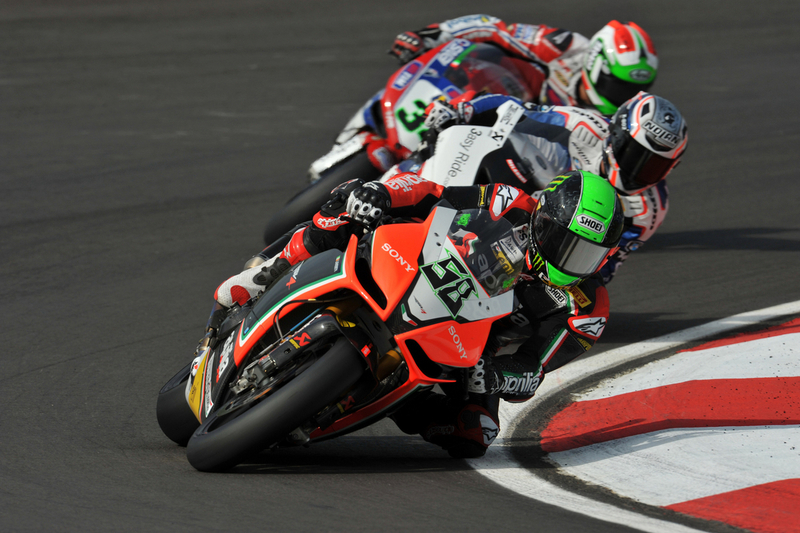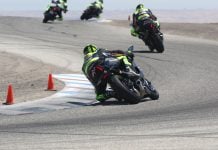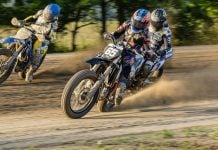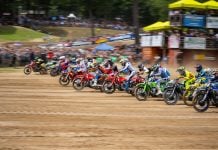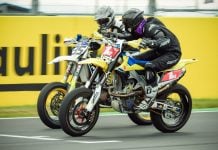Pirelli at Imola for the seventh round and official tests of eni FIM World Superbike Championship The Italian tyre manufacturer will bring various soft and intermediate solutions to the Enzo and Dino Ferrari International Racetrack which have already been used in races, as well as a few development solutions for the official testing sessions on Monday, the only ones scheduled for 2013 after the ones at Phillip Island in February First round of the 2013 Cup of Nations, the Pirelli controlled tyre trophy that will also be held at Moscow and the Nürburgring Imola (Italy), 24 June 2013 – The Pirelli trucks are already headed for Imola for the seventh round of the eni FIM World Superbike Championship season with a load of 5550 tyres to handle the needs of all the riders participating in the 4 classes of the Championship as well as the European Junior Cup and Cup of Nations riders. About 600 of these tyres will also be used for the official Superbike test sessions on Monday, 1 July, the only ones that will be held this year after those conducted at Phillip Island at the beginning of the Championship, therefore they are particularly important both for the 2013 and 2014 solutions. Imola will also be the setting for the début of the 2013 Cup of Nations, which up to last year was called the Two Countries Cup. Reserved for riders who are at least 16 years of age and in possession of a FIM Europe license, authorisation (‘starting permission’) and insurance coverage from their national Federation, the 2013 Cup of Nations is a Pirelli controlled tyre trophy which includes another two rounds in addition to the one at Imola which will be held at the same time as the Moscow Superbike races in mid-July and the Nürburgring round at the end of August. All participating riders can use only tyres purchased directly from Pirelli and marked as indicated by the sole supplier both in the race and in the qualifying and free practice sessions. Pirelli guarantees the riders a minimum of 1 set of dry tyres (SC1 front and rear) and 1 set of wet tyres for each race. The riders are authorised to use only the compounds Pirelli brings to each round. On the front Diablo Supercorsa tyres will be available in SC1 compound in 120/70-17 and for the rear Diablo Supercorsa SC1 and SC2 in 180/60-17 will be available. Specifically, at Imola the riders will use the standard SC1 (P1177) on the front as well as on the rear (R303). The Enzo and Dino Ferrari International Racetrack, better known as the ‘Autodromo di Imola’, is a circuit located in the Municipality of Imola (Bologna), named for Enzo Ferrari, founder of the car manufacturer by the same name, and his son Dino. Before the death of Enzo Ferrari in 1988 it was called the ‘Autodromo Dino Ferrari’. The Imola track, set up for motorcycle racing, is a 4936 metre long circuit with 9 right hand turns and 13 left handers and it is one of the few tracks that runs anti-clockwise. The width of the track goes from a maximum of 15 metres to a minimum of 10 metres with a maximum downhill slope of 9.10% between the Piratella and Acque Minerali turns and a maximum uphill slope of 9.38% between the Acque Minerali and Variante Alta turns. The turn radii goes from a minimum of 11 metres to a maximum of 94, the finish stretch is 350 metres long and the rider that starts from pole position lines up on the left. The circuit and its structures were requalified and upgraded in recent years with a restructuring job that began in November 2006 and ended in September 2007 under the care of the well-known German architect, Hermann Tilke, specialised in building tracks. In the summer of 2009 the New Variante Bassa was created, needed to meet the approval requirements of the International Motorcycling Federation. This operation, intended to neutralise the slight right hand lean characteristic of car tracks, is located in front of pit lane. Then, in August 2011, 70% of the track surface was repaved. Imola from a tyre point of view: The Enzo and Dino Ferrari International Racetrack is recognised all over the world as a rather technical and difficult track with complex turns and braking sections, and it is raced at a fast pace that demands excellent riding skills. At the start you take an early line to enter Variante Tamburello. Get into third gear for a very quick left/right lean, staying in the same gear for the next left-hander which comes out into a straight stretch ending in Variante Villeneuve. Brake hard into the first curve and down shift from fourth to third, reeling the bike out until the right-hand lean. At the Tosa bend, very slow, the rear tyre traces a narrow and stretched line, but manages to provide the traction needed anyway without losing side grip. As the rear tyre comes out of this bend it heats up less than on the fast turns. The external temperature of the tyre goes from 50°C coming into the turn to 120°C going out on the shoulder affected with a lean angle of about 56°. After a short straight section you come to Piratella, a downhill left-hander where diagonals are often used to control the bike. You descend on the section of the track that leads to Acque Minerali, a decisive braking zone and a right-hand curve in the first lean and to the right again where you come out all the way on the kerb. At the Variante Alta you go from one side of the tyre to the other from -55° to +55° at an astonishing speed of 100°/s. In the first phase of the curve the tyre’s steel belt helps to heat the opposite side of the compound which will be used less than a second later. After a long downhill you come to Rivazza, where the front tyre suffers heavy stress – in about a half second the load on the tyre goes from 125 Kg to 250 Kg. You accelerate towards an extremely tight chicane where you graze the wall and throw your bike onto the kerb in first gear, thanks in part to the reactivity of the tyres. Out of the turn you open up to full throttle to rocket across the finish line. With the repaving of about 70% of the surface in 2011, the track reacquired a good level of mechanical grip which had been compromised for some time before that. This, however, also significantly increased the aggressiveness on the rear tyres, especially in medium-low temperatures. This was the case last year when, racing in the month of April, the track temperatures stayed below 20°C. In order to prevent tearing on the tread compound extremely sturdy solutions were needed such as the rear SC2, not only for free practice but also for the races. This year, on the other hand, since the races are at the end of June, the situation will probably be more similar, but even hotter, than the one in September 2011. Two years ago most of the riders raced with the SC1 solutions, showing some signs of wear at the end of the race, although not as intense as in 2012, despite the 35-40°C asphalt temperatures. This year, with even higher temperatures and with a much stronger product in terms of mechanical resistance, Pirelli can afford not to use SC2 solutions, but to bring 2 rear tyres in the SC1 category: the standard SC1 rear tyre and a more reinforced derivative. If the high temperatures completely smooth out the severity of the track the SC0 blend can be used to meet all grip needs. As for the front tyres, the Imola circuit leaves quite a bit of room for the riders’ taste and riding style. With an extremely technical layout made up of straight stretches with decisive, downhill braking sections, chicanes and turns, generally the front tyre selection is always a mixture, without any significant critical issues for soft or more robust front tyres. With high temperatures there is often a tendency toward greater support from the front tyre, leading to a race choice of more rigid solutions like the SC2 options. Imola from a technical point of view: “Imola is a very attractive and demanding track. This is the first year the races will be held here in June and official test sessions will be held on the Monday after the race weekend where the riders will have various development solutions to test. Since this is the only official test session of the 2013 season after the usual one at Phillip Island at the beginning of the year, it will be fundamental for us to gather feedback from the riders in order to evaluate the development solutions we’ve worked on in recent months” said Pirelli Moto Racing Director, Giorgio Barbier “I want to take advantage of this time to provide the first feedback on Marco Melandri’s rear tyre that showed absolutely abnormal wear in Race 2 at Portimão. Chemical tests were conducted in our laboratories in Milan on the tread compound in order to verify both the composition and the level of vulcanisation, as well as to measure the physical/mechanical characteristics to test resistance and elasticity (Dunbbell traction to measure force until breakage), the hardness at the entire operating temperature range to verify the rigidity and thermoplasticity of the compound (IRHD hardness tester) and thermogravimetric analysis to assess the exact quantities in weight of the material families (polymer, load, plasticisers, ash). SEM analyses were also conducted under an electronic microscope in order to ascertain the presence of air bubbles and any porosity along the thickness of the tread strip. All the tests conducted came back negative, leading us to believe that the reason for the abnormal wear is due to factors external to the tyre or in any case not correlated with its construction process. In any case, further tests are currently being conducted on the tyre and we hope to have more complete information soon to share with BMW team at Imola”. Pirelli solutions for the Superbike and Supersport classes: For the Imola round Pirelli will be bringing 4894 tyres for the race weekend in addition to 656 for the official test sessions scheduled for Monday, 1 July, making it a total of 5550 tyres. For the three weekend race days 1486 tyres are destined for Superbike riders, 1938 for Supersport, 528 for Superstock 1000 and 570 for Superstock 600, as well as 150 for the Cup of Nations and 222 for the European Junior Cup. Each Superbike rider will have 33 front and 40 rear tyres to choose from, whereas the Supersport riders will have 24 front and 27 rear tyres. The riders in the Superbike class will have 3 slick solutions available for the front and 4 for the rear, joined as always by 2 rear qualifiers per rider and the intermediate solutions, 4 for the front and as many for the rear, as well as 8 wet tyres for the front and 8 for the rear. On the front the ever present Pirelli standard SC1 solution (R426) will be present in a soft blend, brought to every round raced this year and ideal for low external temperatures and/or medium harsh tracks, as well as the standard SC2 (R982), also brought to all the 2013 rounds and excellent for high external temperatures because it guarantees a solid tread strip. The third and final alternative available to the Superbike riders for the front is the SC2 R753 compound development solution, an alternative to the standard SC2 that was already brought to Phillip Island, Monza and Portimão, which tends to be sturdier and therefore more resistant to aggressive asphalt. Among the solutions for the rear the riders will find the standard SC0, the R1261, already popular at Monza, Donington and Portimão, ideal for tackling smooth asphalt and high temperatures because it provides maximum contact area on smooth asphalt in addition to its greater performance stability under thermal decline. Another standard SC1 (R828), in a medium compound and already making an appearance in the first three rounds of the season, is the most eclectic and therefore able to cover about 80% of the races in the Championship. For example, this was the solution used by all the riders at Motorland Aragón. The third option for the rear is a new development solution (R1431) in an SC1 blend which has never before been used by the riders and which was designed with the goal of providing higher tear resistance but equal grip compared to the standard SC1. For the FIM World Supersport Championship for the rear the two standard solutions will be present, the SC1 in a soft compound (P1177) ideal for medium harsh tracks and the SC2 in medium compound (R1031) ideal for aggressive riders who prefer a compact tread strip, both already used in all the races held so far in 2013. On the rear, as with the Superbike class, the standard SC0 and SC1 solutions will be brought, respectively the R1557, ideal in the event of high temperatures and already seen in action at Donington, and the R303 in a medium blend and ideal for medium harsh tracks, already brought to the first six 2013 rounds. The third solution is the S510, a development SC0 which is ideal in the event of high temperatures, already used at both Monza and Portimão. The 2012 Pirelli statistics for Imola: • Total number of tyres Pirelli brought: 4434 • Number of solutions (dry, intermediate, wet and qualifier only for rear) for the Superbike class: 4 front and 6 rear • Number of solutions for the Supersport class (dry, intermediate and wet): 4 front and 5 rear Number of tyres available for each Superbike rider: 29 front and 35 rear • Number of tyres available for each Supersport rider: 24 front and 28 rear • Superbike Best Lap Awards won by Carlos Checa (Althea Racing) in 1’47.877 (Race 1, 13th lap) and Tom Sykes (Kawasaki Racing Team) in 1’47.552 (Race 2, 7th lap) • Supersport Best Lap Awards won by: Broc Parkes (Ten Kate Racing Products) in 1’51.952 (9th lap) • Temperature in Race 1: air 13° C, asphalt 11° C • Temperature in Race 2: air 15° C, asphalt 18° C • Maximum race speed reached by Pirelli tyres: 289,2 km/h, Marco Melandri (BMW Motorrad Motorsport) in Race 2 on the 15th lap.
Pirelli Bringing Soft And Intermediate Tire Compounds To Imola World Superbike Round
Pirelli Bringing Soft And Intermediate Tire Compounds To Imola World Superbike Round
© 2013, Roadracing World Publishing, Inc.
